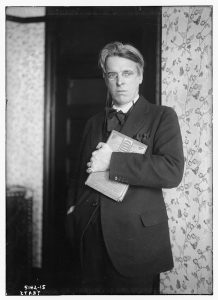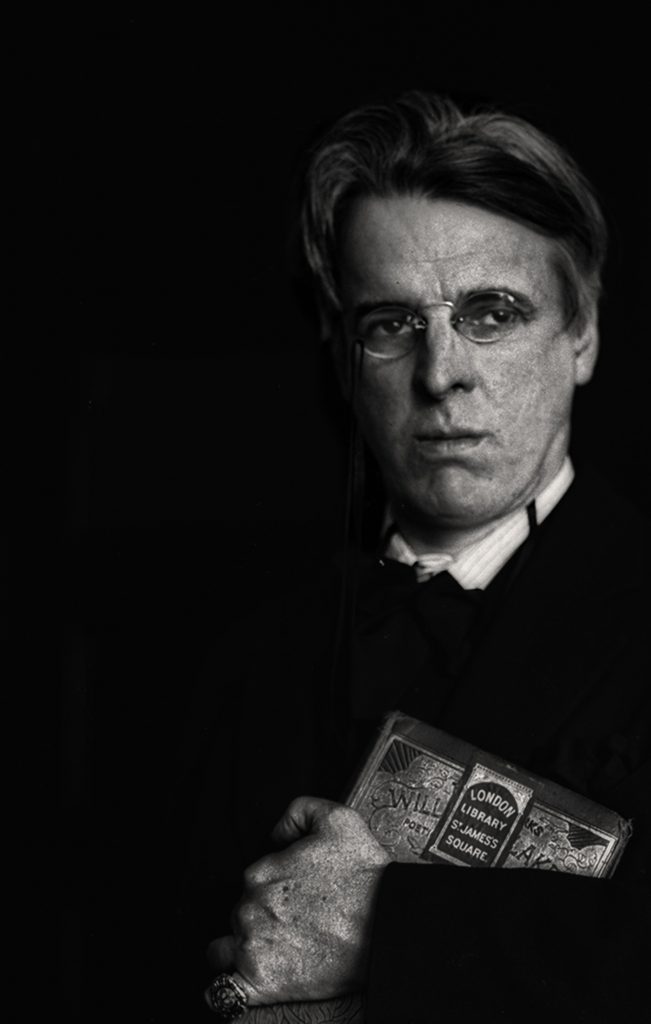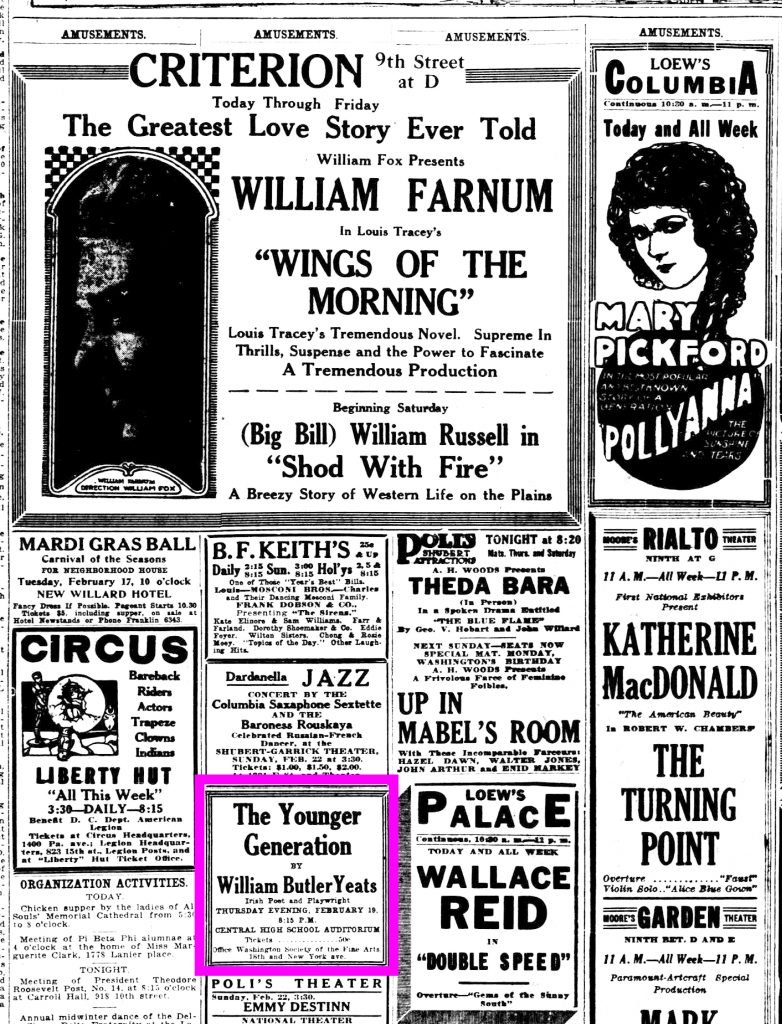Today we have a guest post from Jonathan Morse of the University of Hawai’i at Mānoa. Jon sent us a message asking if we had a use for an image he’d found in the collections of the Library of Congress; his post is the result of that correspondence.
Between January and May 1920, William Butler Yeats toured the United States and Canada under the management of the J. B. Pond Lycaeum Lecture Bureau, addressing audiences on such topics as “The Irish Movement and the Irish Theatre” and “The Younger Generation.” By “the younger generation” he meant contemporary poets. So far as I have been able to learn from the newspaper coverage online at newspapers.com, in the Library of Congress, and in the archives of the student newspapers that covered his appearances at Oberlin and Yale, he never mentioned Blake.
But when he posed in New York for a photographer from the Bain News Agency, he was holding a talisman of the older generation.

Photoshop brings the talisman into clear view. It’s a copy of Yeats’s edition of Blake.

Even without the showy accessory of a gilt-stamped binding in his beringed hand, Yeats dressed like a man of the theater and a bard. A reporter from the Pittsburgh Post provides us with dazzled eyewitness testimony and a palette of imaginative colors for filling in the image’s journalistic black and white.

But the monochrome trace of Yeats’s Blake book turns out to be adequate for all the magic this image needs. Look again, for instance, at the book gripped tight and held like a shield before the heart. Displayed title out, the gilded binding reflects light back from itself to the camera. Behind its reflector, the volume remains not only closed but held closed, as if it contained something precious. Yeats’s face, above the book, seems almost independent of his hand. Obligingly posing itself for a photographer (and this image is one of three different poses), the face is the face of what the poet will call later himself in “Among School Children”: a smiling public man. But in the dark within the book are carefully arrayed some spells composed by William Blake. They won’t be spoken aloud while the public man is conversing with his audiences. When the public man is onstage at a high school in Washington, the Washington Evening Star will group his performance with Theda Bara’s and Mary Pickford’s under the heading of “Amusements.” But the Blake words are at hand beneath the surface of his image as a significance on record. Like Blake’s evening star, they speak silence.

Sources:
For the history of Yeats’s lecture tour: A. Norman Jeffares, W. B. Yeats: A New Biography, rev. ed. (Continuum, 2001) 201-02.
For the image of Yeats in New York: “Yeats,” George Grantham Bain Collection, Library of Congress, http://www.loc.gov/pictures/item/ggb2006005581. The two other poses are at http://www.loc.gov/pictures/item/ggb2006005579 and http://www.loc.gov/pictures/item/ggb2006005580.
“Yeats, ‘Shakespeare of Today,'” Pittsburgh Daily Post 1 March 1920: 3. Online at http://newspapers.com. The article’s reference to “Saturday” would be February 28.
The advertisement for Yeats’s lecture: Evening Star [Washington, DC] 17 February 1920: 16. Online at http://chroniclingamerica.loc.gov/lccn/sn83045462/1920-02-17/ed-1/seq-16.
All images except the first have been post processed by me.
